
Building The FBR
Jaideep Prabhu 9 Sep, 2015
Jaideep A. Prabhu is a specialist in foreign and nuclear policy; he also pokes his nose in energy and defence related matters.
Nuclear energy has the potential to change India’s future. And a few bold scientists are quietly building our first fast breeder reactor (FBR). This is the story of a how a chain reaction could be set off.
Tucked away in the tiny, nondescript village of Kalpakkam in Tamil Nadu is one of India’s little islands of excellence, Bharatiya Nabhikiya Vidyut Nigam (Bhavini). Established in October 2003, Bhavini is a nuclear power utility company wholly owned by the Government of India under the Department of Atomic Energy. Tasked with the construction and operation of advanced nuclear reactors such as the Fast Breeder Reactor (FBR), the company till date has no operational reactors and works on a modest budget. However, the first reactor, the Prototype FBR or PFBR, is scheduled to go critical this month. The average age of its technical workforce is 35 years.
As a utility company, Bhavini does not design or develop new reactors or even improvements to existing ones—that responsibility falls to the Indira Gandhi Centre for Atomic Research (IGCAR), which was known as the Reactor Research Centre (RRC) until 1985 when it was rechristened. IGCAR has ben operating a 13 MW Fast Breeder Test Reactor (FBTR), and the experience garnered from that has led to the design of the soon-to-be-critical 500 MW PFBR.
Tucked away in the tiny, nondescript village of Kalpakkam in Tamil Nadu is one of India’s little islands of excellence, Bharatiya Nabhikiya Vidyut Nigam (Bhavini). Established in October 2003, Bhavini is a nuclear power utility company wholly owned by the Government of India under the Department of Atomic Energy. Tasked with the construction and operation of advanced nuclear reactors such as the Fast Breeder Reactor (FBR), the company till date has no operational reactors and works on a modest budget. However, the first reactor, the Prototype FBR or PFBR, is scheduled to go critical this month. The average age of its technical workforce is 35 years.
As a utility company, Bhavini does not design or develop new reactors or even improvements to existing ones—that responsibility falls to the Indira Gandhi Centre for Atomic Research (IGCAR), which was known as the Reactor Research Centre (RRC) until 1985 when it was rechristened. IGCAR has ben operating a 13 MW Fast Breeder Test Reactor (FBTR), and the experience garnered from that has led to the design of the soon-to-be-critical 500 MW PFBR.
Though much of the nuclear conversation in India has recently veered towards nuclear liability and the import of the latest Generation III or III+ reactors from France and Russia, what makes the mandate of Bhavini so exciting is that it represents a second dawn of the nuclear age. Until now, Light Water Reactors have been the mainstay of global nuclear power generation, numbering 375 of 439 commercial power reactors in operation at the beginning of this year. India’s fleet of reactors is comprised mainly of Pressurised Heavy Water Reactors (PHWR) which are similar in principle to LWRs and are operated by the Nuclear Power Corporation of India (NPCIL). However, the fleet of FBRs Bhavini will eventually operate promises to dramatically improve on the performance of even the latest LWRs.
Light water, heavy water
Light water, heavy water
All nuclear reactors operate by harnessing the energy released by the fission of atoms of fissile material, usually uranium. When an atom of uranium is made to split by bombardment with neutrons, each fission releases two or three additional neutrons. Some of these neutrons are very fast while others are slower.
Natural uranium is composed of two types or isotopes of uranium—U235, which accounts for about 0.7 per cent of the total mass, and U238, which accounts for the rest. The former is more unstable and can be caused to undergo fission by slower neutrons, also called thermal neutrons, while the latter requires the higher energy of fast neutrons to split and maintain a chain reaction.
In the reactors that NPCIL operates, energy is produced in the thermal spectrum, meaning thatenergy is derived from fission reactions caused by thermal neutrons. LWRs slow down the neutrons with the help of a moderator, usually water, so that they may react with the U235. However, water has a tendency to absorb neutrons and remove them from the chain reaction, slowing down and eventually stopping the process. This problem is resolved by simply enriching the fuel slightly so that there is a higher concentration of U235 in it and therefore a greater chance of keeping the chain reaction going.
In the reactors that NPCIL operates, energy is produced in the thermal spectrum, meaning thatenergy is derived from fission reactions caused by thermal neutrons. LWRs slow down the neutrons with the help of a moderator, usually water, so that they may react with the U235. However, water has a tendency to absorb neutrons and remove them from the chain reaction, slowing down and eventually stopping the process. This problem is resolved by simply enriching the fuel slightly so that there is a higher concentration of U235 in it and therefore a greater chance of keeping the chain reaction going.
Heavy Water Reactors (HWR) use, as the name suggests, heavy water or deuterium oxide—water inwhich the hydrogen atom has an extra neutron—as moderator. The extra neutron prevents absorption of neutrons from the fission reactions and the larger size of the heavy water atom allows less energy transfer from neutrons during collision. This obviates the need for fuel enrichment and allows the fission of the more plentiful U238 isotope.
Why fast breeder reactors are good
Bhavini’s fast reactors do not use moderators at all. This reduces the size of the reactor significantly but also reduces its reactivity due to the loss of neutrons. To compensate, fast reactors use plutonium—which gives off three neutrons per fission instead of the two emitted by uranium—as fuel in the core.
Fast neutrons, though not very efficient in causing fission, are susceptible to being captured by the nuclei of natural uranium. U238, upon capture of a neutron (and ejecting two electrons), transmutates to Pu239. So a fast reactor can generate more plutonium than it consumes bysurrounding its plutonium core with a blanket of natural uranium.
Not all fast reactors are breeder reactors; depending upon their configuration, they can also be optimised for other tasks such as the burn-up of spent fuel from LWRs.
FBRs can also be used to handle the “waste” of thermal reactors. The high kinetic energy of neutrons in fast reactors transmutates the transuranic elements found in the spent fuel of thermal reactors. This substantially reduces the volume of nuclear waste as well as the half-life of some long-lasting elements dramatically, from tens of thousands of years to a few centuries. The fuel efficiency of fast reactors is at least an order of magnitude higher than thermal reactors—they use far less fuel to generate the same amount of power, augmenting India’s scarce and low-grade uranium stocks.
For example, the two PHWRs at the Madras Atomic Power Plant generate 440 MW of electric powerand consume about 100 tonnes of fuel per annum; the 500 MW PFBR next door is expected to utilize some 500 kg of fuel over the same period.
Since fast reactors try and avoid anything that might moderate neutrons, they tend to use liquid metals as coolants. The higher density of liquid metals makes them more efficient in heatremoval and their heavier atoms absorb less energy from neutrons upon collision. Liquid metals also need not be pressurized as their boiling point is higher than the operating temperature of the reactor.
So why is the world not interested?
Despite these highly useful capabilities of FBRs, there has been little international enthusiasm for the technology. In fact, India is one of the very few countries that has even pursuedthe technology. Presently, the only commercial fast reactor in the world is operating in Russia at Beloyarsk, though Japan is awaiting clearance from its nuclear regulatory authority forits reactor at Monju.
At one point, France was at the forefront of fast reactor technology but it shut down its Phénix reactor in 2009. The United States and Britain experimented with the technology in the 1960s but in the 1970s, decided not to pursue it further. However, there are several ongoing projects in Europe such as ASTRID (Advanced Sodium Technological Reactor for Industrial Demonstration) in France and ALFRED (Advanced Lead Fast Reactor European Demonstrator) and ELSY (European Lead-cooled System) in Europe, though none of them are expected to come to fruition forat least another decade. China has also shown great interest in fast reactors of late and is operating a research reactor outside Beijing.
Many of these reactors were shut down prematurely and for political reasons. Mid-20th century, uranium was thought to be scarce and fast reactors were expected to better utilise world uranium supplies through their higher fuel efficiency. This, they could do by a factor of about60 to 80. But the discovery of new sources of uranium dampened interest in fast reactors.
Why fast breeder reactors are good
Bhavini’s fast reactors do not use moderators at all. This reduces the size of the reactor significantly but also reduces its reactivity due to the loss of neutrons. To compensate, fast reactors use plutonium—which gives off three neutrons per fission instead of the two emitted by uranium—as fuel in the core.
Fast neutrons, though not very efficient in causing fission, are susceptible to being captured by the nuclei of natural uranium. U238, upon capture of a neutron (and ejecting two electrons), transmutates to Pu239. So a fast reactor can generate more plutonium than it consumes bysurrounding its plutonium core with a blanket of natural uranium.
Not all fast reactors are breeder reactors; depending upon their configuration, they can also be optimised for other tasks such as the burn-up of spent fuel from LWRs.
FBRs can also be used to handle the “waste” of thermal reactors. The high kinetic energy of neutrons in fast reactors transmutates the transuranic elements found in the spent fuel of thermal reactors. This substantially reduces the volume of nuclear waste as well as the half-life of some long-lasting elements dramatically, from tens of thousands of years to a few centuries. The fuel efficiency of fast reactors is at least an order of magnitude higher than thermal reactors—they use far less fuel to generate the same amount of power, augmenting India’s scarce and low-grade uranium stocks.
For example, the two PHWRs at the Madras Atomic Power Plant generate 440 MW of electric powerand consume about 100 tonnes of fuel per annum; the 500 MW PFBR next door is expected to utilize some 500 kg of fuel over the same period.
Since fast reactors try and avoid anything that might moderate neutrons, they tend to use liquid metals as coolants. The higher density of liquid metals makes them more efficient in heatremoval and their heavier atoms absorb less energy from neutrons upon collision. Liquid metals also need not be pressurized as their boiling point is higher than the operating temperature of the reactor.
So why is the world not interested?
Despite these highly useful capabilities of FBRs, there has been little international enthusiasm for the technology. In fact, India is one of the very few countries that has even pursuedthe technology. Presently, the only commercial fast reactor in the world is operating in Russia at Beloyarsk, though Japan is awaiting clearance from its nuclear regulatory authority forits reactor at Monju.
At one point, France was at the forefront of fast reactor technology but it shut down its Phénix reactor in 2009. The United States and Britain experimented with the technology in the 1960s but in the 1970s, decided not to pursue it further. However, there are several ongoing projects in Europe such as ASTRID (Advanced Sodium Technological Reactor for Industrial Demonstration) in France and ALFRED (Advanced Lead Fast Reactor European Demonstrator) and ELSY (European Lead-cooled System) in Europe, though none of them are expected to come to fruition forat least another decade. China has also shown great interest in fast reactors of late and is operating a research reactor outside Beijing.
Many of these reactors were shut down prematurely and for political reasons. Mid-20th century, uranium was thought to be scarce and fast reactors were expected to better utilise world uranium supplies through their higher fuel efficiency. This, they could do by a factor of about60 to 80. But the discovery of new sources of uranium dampened interest in fast reactors.
Furthermore, the United States was increasingly concerned about the spread of nuclear weaponsand the ability of fast reactors to breed plutonium was seen negatively. Washington not only shut down its own programme but also put pressure on other countries to abandon their interest in fast reactors and even reprocessing spent fuel for plutonium.
The technology has not been easy to master. Early sodium-cooled reactors had several mishaps with leaks and fires. Technical problems with the Superphénix saw the reactor out of commission for 25 months and at low power for 63 months of its 11 years of operation.
A major fire at Monju in December 1995, within 18 months of its criticality, shut the reactordown for 15 years and within three months of its restart in May 2010, new problems surfaced and the reactor had to be shut down again. India’s FBTR also had two major mishaps: in 1987, the refuelling mechanism was severely damaged, and in 2002, some 75 kg of radioactive sodium was spilled due a defective valve. The reactor had to be shut down for two years after its first accident in 1987 and operated at very low power until 1992.
The problem is that sodium has very high chemical reactivity, causing it to burst into flamesif it comes in contact with water. At Monju, the leaked sodium reacted with the moisture in the air and caused thick, acrid smoke instantaneously. This made breathing difficult, visibility non-existent, and created a radioactive environment in which repairs would have to be carried out.
Critics of fast breeder reactor programmes point out that these reactors already work with dangerous, highly radioactive substances such as plutonium and actinides and even routine refuelling is an arduous task; the additional risk of handling sodium makes the entire venture unacceptably high-risk.
Given these high risks and the reticence of many industrially advanced countries to commit tofast breeder reactor development, is the Indian nuclear conclave acting prematurely?
The technology has not been easy to master. Early sodium-cooled reactors had several mishaps with leaks and fires. Technical problems with the Superphénix saw the reactor out of commission for 25 months and at low power for 63 months of its 11 years of operation.
A major fire at Monju in December 1995, within 18 months of its criticality, shut the reactordown for 15 years and within three months of its restart in May 2010, new problems surfaced and the reactor had to be shut down again. India’s FBTR also had two major mishaps: in 1987, the refuelling mechanism was severely damaged, and in 2002, some 75 kg of radioactive sodium was spilled due a defective valve. The reactor had to be shut down for two years after its first accident in 1987 and operated at very low power until 1992.
The problem is that sodium has very high chemical reactivity, causing it to burst into flamesif it comes in contact with water. At Monju, the leaked sodium reacted with the moisture in the air and caused thick, acrid smoke instantaneously. This made breathing difficult, visibility non-existent, and created a radioactive environment in which repairs would have to be carried out.
Critics of fast breeder reactor programmes point out that these reactors already work with dangerous, highly radioactive substances such as plutonium and actinides and even routine refuelling is an arduous task; the additional risk of handling sodium makes the entire venture unacceptably high-risk.
Given these high risks and the reticence of many industrially advanced countries to commit tofast breeder reactor development, is the Indian nuclear conclave acting prematurely?
Perumal Chellapandi, chairman and managing director of Bhavini, does not think so. “We have to do it,” he simply says.
The Indian argument for fast breeder reactors
What might appear as stubbornness to the casual observer has a long institutional and national history. Ever since Independence and the days of Homi Bhabha, Indian scientists and research institutions have insisted on indigenous mastery of high technology. In this, they have usually received the full support of the country’s political class.
Where possible, Indian scientists have developed the science and engineering in-house, and purchases from foreign sources have usually included a clause for transfer of technology.
By repeatedly carping on technical challenges that have already been resolved, critics have painted an unfair portrait of fast reactors, says Chellapandi, though he refused to ascribe any motive to their analyses.
Despite its initial difficulties, the FBTR achieved a burn-up of 100,000 MW days per tonne without a single fuel pin failure in 2002—this is a very important milestone and is a measurement of how much energy has been extracted from nuclear fuel before it needs to be recycled. The greater the burn-up, the lower the cost of recycling or storage.
By way of comparison, burn-up for PHWRs is around 7,000 MWd/t and 40,000 MWd/t for LWRs. Scientists at IGCAR are confident that India’s FBRs will achieve a burn-up of 150,000 MWd/t or more. The pumps, steam generators, and other reactor components have logged in tens of thousands of hours of trouble-free operation since 2002. This October will mark 30 years of operationof the FBTR and in 2011, it was announced that the reactor would continue to function for another 20 years.
The three phases of the indian nuclear programme
FBRs form the second phase of India’s three-stage nuclear programme as envisioned by Homi Bhabha. In the first stage, PHWRs burned natural uranium and generated plutonium as a by-product. Based on India’s natural resources, there is a limit to how many indigenously fuelled PHWRscan be built—approximately 13 GW worth.
In the second stage, FBRs will burn a plutonium-uranium carbide mix and breed more plutonium.Once plutonium stocks are built up, thorium can be introduced into the reactor as a blanket material to be transmuted into U233 for the third stage.
Finally, in the third stage, thermal breeder reactors will be deployed with Th232-U233 fuel. These reactors can be refuelled with only thorium once they have been initiated with a neutron-rich source. The third stage is not likely to be launched until second stage reactors are capable of generating at least 50 GW and large-scale deployment of thorium reactors is not expected until 2050.
Plutonium doubling time
It has also been argued that India is too optimistic in calculating the time it will take forsufficient plutonium stocks to be built up by the FBRs. Doubling time, the term used to referto how long it will take to breed twice the amount of fissile material the reactor was initially fuelled with, has been recalculated by some scientists to be as high as 70 years instead of IGCAR’s claims of between 10 and 30 years, depending upon the type of fuel.
Chellapandi is not fazed by this, explaining why doubling time is not an issue. “There will be multiple reactors simultaneously in operation,” he argues, “and each will contribute to thestockpile.” With a fleet of FBRs, the exaggerated 70-year doubling time will come down by a factor of the number of reactors.
The Department of Atomic Energy is not particularly concerned with doubling time because several FBRs have been planned—after the PFBR, work will begin on two 600 MW FBRs at Kalpakkam itself. Two more have been approved and are in the geographical and environmental survey phase,while two more have been planned and are in the final stages of approval. Technically, there are different definitions of doubling time—over a reactor vs over a system—but that does not hinder the rapid deployment of more FBRs.
Yet, if doubling time were a concern, the system could be optimized for that by delaying the introduction of thorium into the fuel cycle, increasing the density of the oxide fuel, and making the stainless steel container, which absorbs some neutrons, thinner. Metal fuel could also be used instead of oxide or carbide fuel as it has a breeding ratio of almost 1.5 as compared to around 1.1 for oxide fuel and 1.3 to carbide fuel.
However, as scientists have repeatedly stated, the PBFR is a prototype reactor and the primary objective is to provide power at the lowest possible cost. But even before that, it is of paramount importance to ensure that the PFBR operates to textbook perfection. As per current plans, Bhavini expects the nuclear energy sector in India to show rapid growth only post 2030.
Another option to bypass the potential bottleneck of the time required to breed more plutonium is to import the fuel. Although the element has been treated as a pariah for its long half-life and potential for weaponization, nothing inherently obstructs the trade of plutonium in an international nuclear market just like uranium, provided adequate safeguards are established. If India were willing to put some of its fast reactors under safeguards, it could have a fleet of 20 FBRs virtually overnight.
What of the long time it takes to construct a nuclear reactor? The CMD of Bhavini accepts that the PFBR had taken a little longer than usual but insists that there would be no delays in building future reactors.
A combination of 40 years of sanctions and the low priority India has placed on nuclear poweras resulted in poor skill development and Indian industry is presently not capable of providing for a rapidly expanding nuclear energy sector. The PFBR was delayed by three years, for example, because Bhavini had to work closely with the steel industry to develop and forge metalto exacting standards. With the experience of one 500 MW reactor under their belt, componentsfor future similarly sized reactors can be manufactured quickly.
But if Bhavini were to develop a 900 MW or 1,200 MW fast reactor later, Indian industry wouldlikely need more time to redesign the enlarged pressure vessel and other components.
The Indian argument for fast breeder reactors
What might appear as stubbornness to the casual observer has a long institutional and national history. Ever since Independence and the days of Homi Bhabha, Indian scientists and research institutions have insisted on indigenous mastery of high technology. In this, they have usually received the full support of the country’s political class.
Where possible, Indian scientists have developed the science and engineering in-house, and purchases from foreign sources have usually included a clause for transfer of technology.
By repeatedly carping on technical challenges that have already been resolved, critics have painted an unfair portrait of fast reactors, says Chellapandi, though he refused to ascribe any motive to their analyses.
Despite its initial difficulties, the FBTR achieved a burn-up of 100,000 MW days per tonne without a single fuel pin failure in 2002—this is a very important milestone and is a measurement of how much energy has been extracted from nuclear fuel before it needs to be recycled. The greater the burn-up, the lower the cost of recycling or storage.
By way of comparison, burn-up for PHWRs is around 7,000 MWd/t and 40,000 MWd/t for LWRs. Scientists at IGCAR are confident that India’s FBRs will achieve a burn-up of 150,000 MWd/t or more. The pumps, steam generators, and other reactor components have logged in tens of thousands of hours of trouble-free operation since 2002. This October will mark 30 years of operationof the FBTR and in 2011, it was announced that the reactor would continue to function for another 20 years.
The three phases of the indian nuclear programme
FBRs form the second phase of India’s three-stage nuclear programme as envisioned by Homi Bhabha. In the first stage, PHWRs burned natural uranium and generated plutonium as a by-product. Based on India’s natural resources, there is a limit to how many indigenously fuelled PHWRscan be built—approximately 13 GW worth.
In the second stage, FBRs will burn a plutonium-uranium carbide mix and breed more plutonium.Once plutonium stocks are built up, thorium can be introduced into the reactor as a blanket material to be transmuted into U233 for the third stage.
Finally, in the third stage, thermal breeder reactors will be deployed with Th232-U233 fuel. These reactors can be refuelled with only thorium once they have been initiated with a neutron-rich source. The third stage is not likely to be launched until second stage reactors are capable of generating at least 50 GW and large-scale deployment of thorium reactors is not expected until 2050.
Plutonium doubling time
It has also been argued that India is too optimistic in calculating the time it will take forsufficient plutonium stocks to be built up by the FBRs. Doubling time, the term used to referto how long it will take to breed twice the amount of fissile material the reactor was initially fuelled with, has been recalculated by some scientists to be as high as 70 years instead of IGCAR’s claims of between 10 and 30 years, depending upon the type of fuel.
Chellapandi is not fazed by this, explaining why doubling time is not an issue. “There will be multiple reactors simultaneously in operation,” he argues, “and each will contribute to thestockpile.” With a fleet of FBRs, the exaggerated 70-year doubling time will come down by a factor of the number of reactors.
The Department of Atomic Energy is not particularly concerned with doubling time because several FBRs have been planned—after the PFBR, work will begin on two 600 MW FBRs at Kalpakkam itself. Two more have been approved and are in the geographical and environmental survey phase,while two more have been planned and are in the final stages of approval. Technically, there are different definitions of doubling time—over a reactor vs over a system—but that does not hinder the rapid deployment of more FBRs.
Yet, if doubling time were a concern, the system could be optimized for that by delaying the introduction of thorium into the fuel cycle, increasing the density of the oxide fuel, and making the stainless steel container, which absorbs some neutrons, thinner. Metal fuel could also be used instead of oxide or carbide fuel as it has a breeding ratio of almost 1.5 as compared to around 1.1 for oxide fuel and 1.3 to carbide fuel.
However, as scientists have repeatedly stated, the PBFR is a prototype reactor and the primary objective is to provide power at the lowest possible cost. But even before that, it is of paramount importance to ensure that the PFBR operates to textbook perfection. As per current plans, Bhavini expects the nuclear energy sector in India to show rapid growth only post 2030.
Another option to bypass the potential bottleneck of the time required to breed more plutonium is to import the fuel. Although the element has been treated as a pariah for its long half-life and potential for weaponization, nothing inherently obstructs the trade of plutonium in an international nuclear market just like uranium, provided adequate safeguards are established. If India were willing to put some of its fast reactors under safeguards, it could have a fleet of 20 FBRs virtually overnight.
What of the long time it takes to construct a nuclear reactor? The CMD of Bhavini accepts that the PFBR had taken a little longer than usual but insists that there would be no delays in building future reactors.
A combination of 40 years of sanctions and the low priority India has placed on nuclear poweras resulted in poor skill development and Indian industry is presently not capable of providing for a rapidly expanding nuclear energy sector. The PFBR was delayed by three years, for example, because Bhavini had to work closely with the steel industry to develop and forge metalto exacting standards. With the experience of one 500 MW reactor under their belt, componentsfor future similarly sized reactors can be manufactured quickly.
But if Bhavini were to develop a 900 MW or 1,200 MW fast reactor later, Indian industry wouldlikely need more time to redesign the enlarged pressure vessel and other components.
On the whole, fast reactors will work out cheaper than present-day reactors because they use substantially less fuel, produce far less waste that has shorter half-life, and is much smaller—the core of the PFBR is approximately two metres tall and 0.75 metres wide. Like the latest LWRs, they also come with inherent safety features such as a negative void coefficient—a fancy way of saying that the reactions slow down as the reactor gets hotter, thereby making a meltdown impossible.
The boom in light water reactors
The boom in light water reactors
It is LWRs that have captured India’s imagination at the moment. Since the signing of the Indo-US nuclear deal in 2008, several proposals for purchasing foreign reactors have been floated. The 1988 deal with the Soviet Union is being continued with Russia at Kudankulam, and Rosatom has offered up to 20 more reactors if India so desires; Areva is expected to construct the world’s largest nuclear power plant at Jaitapur with six 1,650 MW EPR reactors; Kovvada in Andhra Pradesh is supposed to get six of GE’s 1,530 MW ESBWRs, and Mithi Virdhi has been chosen for six of Westinghouse’s AP1000 reactors. Would so many LWRs not hurt the growth of FBRs?
Chellapandi does not think so. After all, the waste produced by those reactors can easily be used to fuel fast reactors. Thus, in no way is NPCIL in competition with Bhavini and an idealreactor fleet would be a combination of Gen III+ as well as fast reactors.
Although Bhavini will run the world’s second commercial fast reactor, the scientists behind the programme are not resting on their laurels. Between IGCAR and the Bhabha Atomic Research Centre, several new reactor designs are being studied.
One design that has received some publicity is the thorium-fuelled Advanced Heavy Water Reactor (AHWR) which is scheduled to break ground next year. With much less fanfare, India is alsoinvestigating reactor designs that reduce the time until direct thorium utilisation. Molten Salt Reactors, Accelerator Driven Systems, and Compact High Temperature Reactors are all understudy as well as various fuel mixes in PHWRs. It is very likely that these new designs will also one day come under Bhavini.
Some of these designs may not be as fuel-efficient as the fast breeder reactor, but they makeup for it by offering even greater safety. In fact, as one director at NPCIL boasted, the Advanced Heavy Water Reactor is so safe and requires so small an exclusion zone that it can be built in the middle of a city!
The dawning of a new age
Chellapandi does not think so. After all, the waste produced by those reactors can easily be used to fuel fast reactors. Thus, in no way is NPCIL in competition with Bhavini and an idealreactor fleet would be a combination of Gen III+ as well as fast reactors.
Although Bhavini will run the world’s second commercial fast reactor, the scientists behind the programme are not resting on their laurels. Between IGCAR and the Bhabha Atomic Research Centre, several new reactor designs are being studied.
One design that has received some publicity is the thorium-fuelled Advanced Heavy Water Reactor (AHWR) which is scheduled to break ground next year. With much less fanfare, India is alsoinvestigating reactor designs that reduce the time until direct thorium utilisation. Molten Salt Reactors, Accelerator Driven Systems, and Compact High Temperature Reactors are all understudy as well as various fuel mixes in PHWRs. It is very likely that these new designs will also one day come under Bhavini.
Some of these designs may not be as fuel-efficient as the fast breeder reactor, but they makeup for it by offering even greater safety. In fact, as one director at NPCIL boasted, the Advanced Heavy Water Reactor is so safe and requires so small an exclusion zone that it can be built in the middle of a city!
The dawning of a new age
The Indo-US nuclear deal was a landmark in Indian nuclear history because it ended four decades of sanctions against India. There was great excitement at what it would mean for India’s energy sector and the ripple effects that it would have on industry and quality of life.
Bhavini holds the potential to fulfil that promise. Not only will India have more reactors producing energy but they will be safer and can be fuelled indigenously after a few years. Thiswill reduce India’s exposure to the vagaries of international nuclear politics. Like every scientist who has occupied so senior a position before him, Chellapandi insists that self-reliance is crucial. But if India is to be self-reliant in this arena, industry will have to also simultaneously develop its manufacturing capabilities.
Bhavini holds the potential to fulfil that promise. Not only will India have more reactors producing energy but they will be safer and can be fuelled indigenously after a few years. Thiswill reduce India’s exposure to the vagaries of international nuclear politics. Like every scientist who has occupied so senior a position before him, Chellapandi insists that self-reliance is crucial. But if India is to be self-reliant in this arena, industry will have to also simultaneously develop its manufacturing capabilities.
However, Indian industry will be interested in developing skills in this area only if there is potential for repeat orders and perhaps exports. When asked about potential exports and establishing India as a major nuclear player, Chellapandi is not opposed to the idea but feels that there is sufficient domestic need to sustain the industry in the medium term.
But how does one address the public paranoia about nuclear technology? This is one question Chellapandi does not have a definite answer to. “All you can do is continue to engage with them, do community outreach, and explain what is being done,” he says. NPCIL and Bhavini already do this—free health camps, lectures at schools and universities, public amenities in the vicinity of the nuclear facilities, adoption of villages.
But how does one address the public paranoia about nuclear technology? This is one question Chellapandi does not have a definite answer to. “All you can do is continue to engage with them, do community outreach, and explain what is being done,” he says. NPCIL and Bhavini already do this—free health camps, lectures at schools and universities, public amenities in the vicinity of the nuclear facilities, adoption of villages.
Without any exaggeration, Bhavini can be said to represent a second dawning of the nuclear age. The first dawn in July 1945 brought with it the horsemen of the apocalypse but this one holds the promise of redemption. Bhavini and its reactors will consume almost 80 times less fuel than a comparable LWR and generate substantially less nuclear waste; it will even breed more fuel in the process. Most importantly, the waste it generates will have radioactive half lives of around 400-700 years rather than the 24,000 years that LWR waste has. This will make handling and storage cheaper and safer. Fast reactors will optimally utilise Indian natural resources and insulate the country’s nuclear energy establishment from geopolitical games. Simply put, fast reactors can bring energy security within India’s grasp.
Chellapandi joined the Reactor Research Centre (later renamed IGCAR) in September 1978. In September this year, he will complete 37 years of service just as India’s first commercial fastbreeder reactor goes online. It is a fitting work anniversary token for a man who most deserves to be called the father of India’s fast reactor programme.
This article was published in the August 2015 issue of Swarajya.
http://swarajyamag.com/magazine/building-the-fbr/
http://swarajyamag.com/magazine/building-the-fbr/









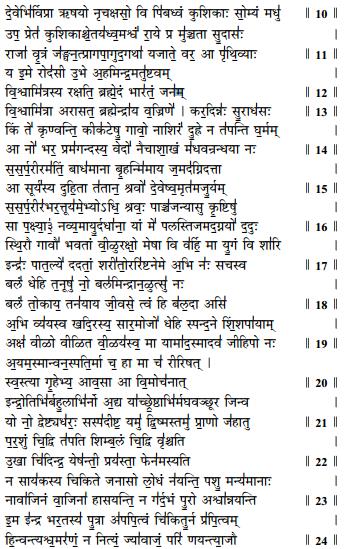


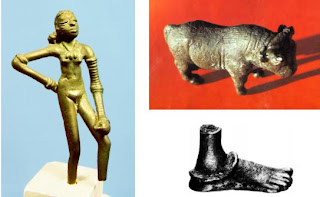





















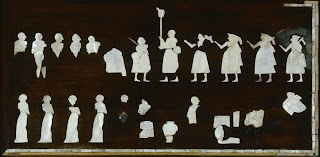

 Mohenjo-daro pectoral (Fig.7)
Mohenjo-daro pectoral (Fig.7)



 Dong Son Bronze drum Top surface with hieroglyphs
Dong Son Bronze drum Top surface with hieroglyphs


 Nahal Mishmar arsenical-copper artifacts (with hieroglyphs), 4th millennium BCE.
Nahal Mishmar arsenical-copper artifacts (with hieroglyphs), 4th millennium BCE.








 Writings from Indus Valley civilisation
Writings from Indus Valley civilisation













































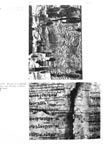





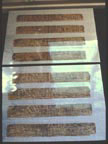





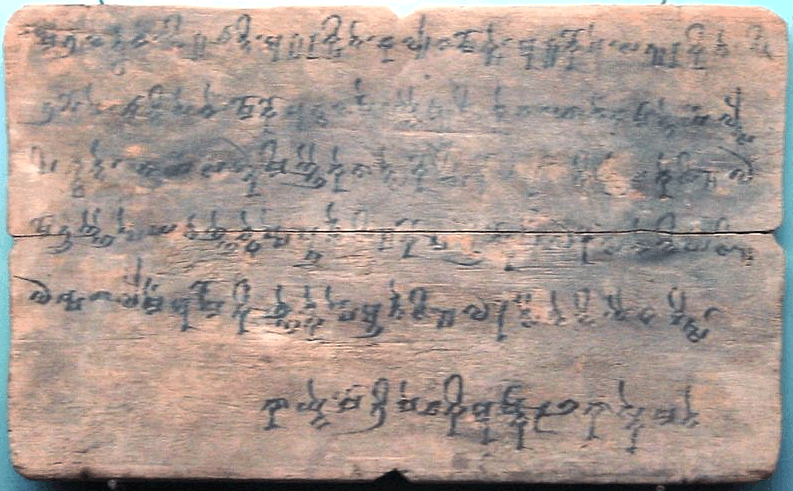







































































































































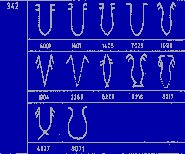


 "
"

































































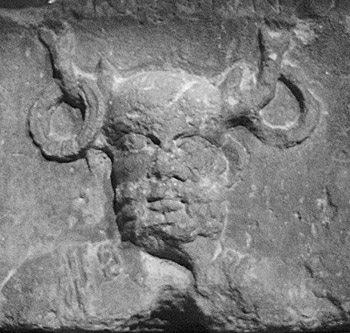 Cernunnos. Twigs as horns with rings.
Cernunnos. Twigs as horns with rings.














 P
P








 [Pl. 39, Tree symbol (often on a platform) on punch-marked coins; a symbol recurring on many Indus script tablets and seals.
[Pl. 39, Tree symbol (often on a platform) on punch-marked coins; a symbol recurring on many Indus script tablets and seals. 



























 .
.



















